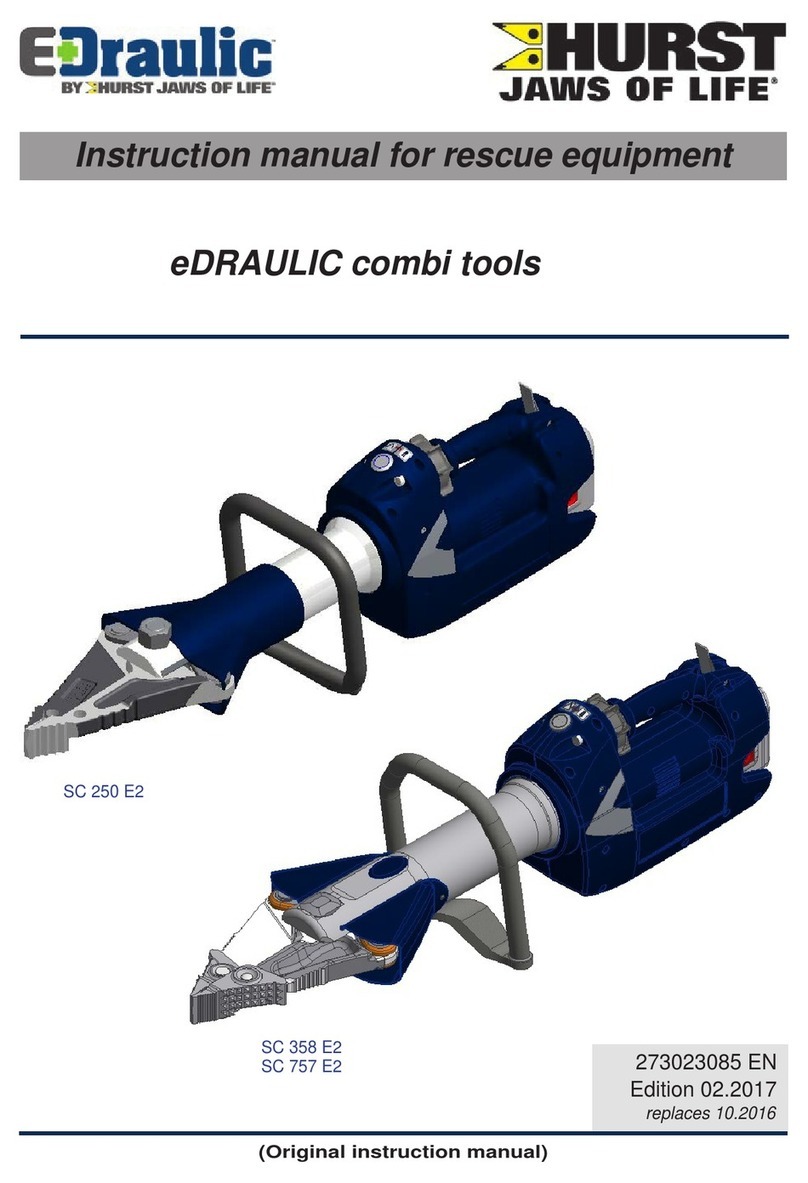
en
es
fr
pt
10
4.6.6 Pushing
Place the rescue ram between the object to be pushed and actuate the star grip
valve in the extending direction (Figure H�)�
4.7 Removing the tips
The removeable tips are connected to the device arm with bolts� To remove the
tips, the bolts must be fully pushed in and then fully locked again (Figure I�)�
4.8 Automatic switch-off
If the rescue device is not activated for a period of 60 minutes, it switches off auto-
matically�
4.9 Dismantling/shutting down after operation
Once work has been completed, the device arms should be closed until the tips are
only a few millimeters apart and the ram piston should be almost fully retracted and
then extended a few millimeters� This relieves the hydraulic and mechanical strain
on the equipment� For transport and storage, all devices should be secured and not
loosely stored�
5. MAINTENANCE AND CARE
A visual check is to be carried out after each use� After every use, the lubrication of
the moving parts and bolts must be checked and topped off with a suitable grease,
if necessary� The torque of the central bolt on cutting and combination tools must
also be checked. To do so, check the specications in the spare parts lists.
Any dirt must be removed with a damp cloth� The rescue device should not come
into contact with acids or alkalis� If this is unavoidable, clean the device immediate-
ly afterwards�
An annual inspection of the device is due each year and must be documented� The
annual inspection must be performed by a person with the necessary expertise�
A function and load test must be conducted every three years or in case of any
safety concerns� Only testing equipment approved by HURST may be used�
Please also observe the relevant domestic and international regulations on the
maintenance intervals of rescue devices�
5.1 Maintenance after use under water
• Remove the battery after use� Rinse the device and battery several times in
fresh, clean water. Immerse the device completely in order to ll the housing
with clean water� Lift the device out and let it drain completely� Depending on
the type of water (mud, sludge, algae, etc�) in which the device was used,
repeat these steps another 2-5 times�
• Wipe the device and the battery with a clean, dust-free and damp cloth in
order to remove dirt and deposits�
• Allow the device and battery to dry at room temperature in a well-ventilated
location� 36-48 hours is recommended� During this drying time, the device is
completely operational�
• Lubricate all exposed steel parts (shear blade, links, etc�) with an anticorrosion
agent�
• Perform function test�




























